Signs You Need Foundation Repair in Chicago
At CW Basement Waterproofing, we all know that a solid foundation is essential for every home. In Chicago, where the weather can swing dramatically and the soil presents its own challenges, we often see early signs of foundation distress that might hint at deeper structural issues. These signs can put your property’s safety and value at risk. We’ve observed that problems left unaddressed can escalate into significant damage, costing homeowners both time and money. That’s why we firmly believe that prompt foundation repair is vital. It not only safeguards your basement from water intrusion but also helps maintain the aesthetic and structural integrity of your home.
In this article, we’ll share our insights on spotting exterior and interior signals that your foundation might need attention. Together, we’ll explore common warning signs such as cracks in the brickwork, gaps around doors and windows, and uneven floor levels. We’ll also discuss issues often found in basements and crawl spaces, outline potential causes, and help you discern between minor settling and more serious damage. We aim to empower you with the knowledge necessary to determine when it’s time to reach out for professional help. A proactive approach ensures your home remains safe, dry, and structurally sound, especially in our unique Chicago environment. Each section is thoughtfully organized to highlight specific signs, their implications, and our suggestions on effectively addressing these issues. By understanding these cues, you can help prevent further structural damage and make informed decisions about the right repair strategies for your home.
Recognizing Exterior Warnings of Foundation Distress in Chicago Homes
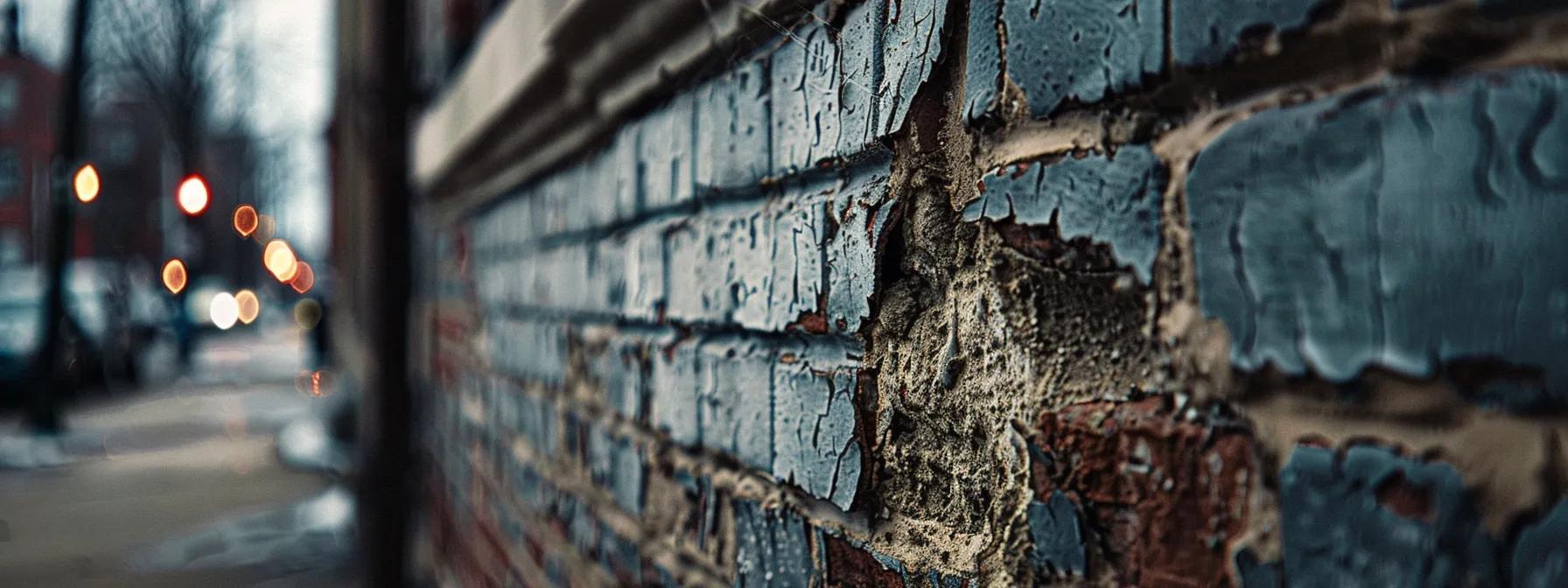
When we examine homes in Chicago, our first stop is usually the exterior. We understand that the way your home looks on the outside can tell us a lot about the health of its foundation. If we notice any signs of exterior distress, we must consider them indicators that something might not be quite right with the structural integrity of your home. It’s always better to address these concerns sooner rather than later.
During our inspections, we pay close attention to potential issues, starting with even the smallest signs, like superficial cracks. These minor details can often signal deeper, systemic problems lurking beneath the surface. Our approach to basement waterproofing Chicago is rooted in a thorough understanding of these early warning signs, helping ensure that your home remains safe and sound for years to come. We believe that by catching these concerns early, we can help protect your investment and provide you with peace of mind.
Identifying Cracks in Your Chicago Property’s Brickwork or Siding
In our experience, hairline cracks in brickwork or siding are one of the first signs of potential foundation movement. Often, these cracks may begin as minor blemishes but can widen over time, which might indicate that the structure is shifting. We’ve observed that such cracks can be symptomatic of uneven settling, which may necessitate a more thorough inspection to prevent further damage. Noticeable, recurring cracks suggest that water from rainfall or melting snow has seeped into the mortar, weakening it gradually.
Observing Gaps Around Windows or Exterior Doors
Gaps between the window frames or door units and the external wall signal that the house may be pulling away from its structural supports. We have seen structural separation often linked to foundation settling at CW Basement Waterproofing. These gaps are not only an eyesore but can also lead to increased energy loss as drafts infiltrate your home’s interior. Such issues, especially when combined with warped frames, highlight the necessity of addressing foundation support immediately.
Spotting Foundation Cracks or Crumbling Concrete
When concrete foundation walls begin to crack or crumble, it is an unmistakable sign that the underlying structure is deteriorating. We look for vertical, horizontal, or staircase-patterned cracks, which often indicate differential settlement. In Chicago’s freeze-thaw cycle, repeated expansion and contraction of moisture-laden soil can exacerbate these issues. Once cracks appear, they may permit additional moisture ingress, which can lead to further deterioration and, ultimately, serious structural instability.
Noticing a Leaning Chimney on Your Chicago Residence
A leaning chimney is a classic indicator of foundation issues. When the base of your chimney shifts or tilts noticeably, it reflects uneven settlement beneath a major structural element. We’ve noticed that in many Chicago homes, a leaning chimney, even slightly off vertical, correlates with broader foundation movement, and such symptoms should prompt a detailed structural evaluation.
Assessing Uneven or Sagging Rooflines
Another external red flag is an uneven roofline or sagging of parts of the home. Such issues can result from uneven foundation settlement and compromise overall structural balance. In our work, we have frequently encountered sagging rooflines that mirror subsidence issues underneath the home. These roof deformations not only affect your home’s curb appeal but can also lead to further complications like water pooling and leak formation, signaling that timely intervention is required.
Interior Indicators Pointing to Chicago Foundation Issues
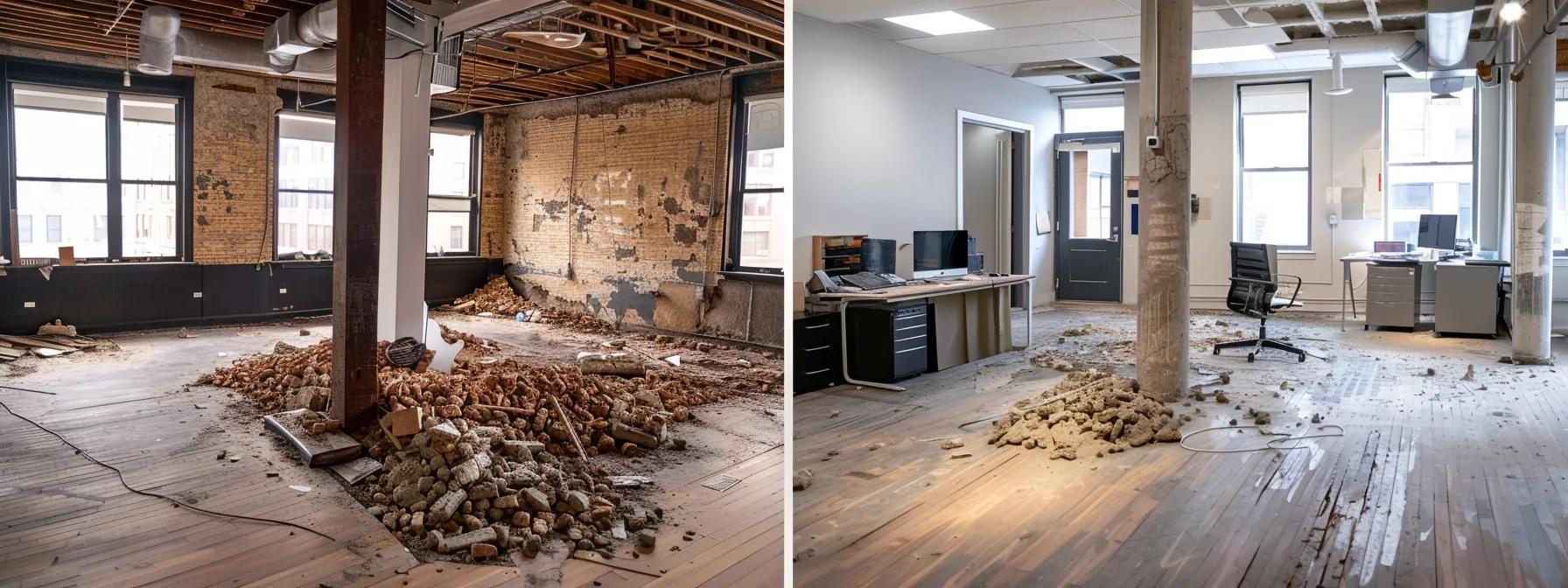
At CW Basement Waterproofing, we understand that keeping an eye on your home’s outside and inside is essential for maintaining a strong foundation. While the exterior signs of water damage can be pretty telling, we often find that the interior indicators offer crucial insights into the health of your foundation. When we step inside your property, we carefully look at your walls, floors, and door frames, watching for unusual shifts or movements. These subtle signs, although sometimes easily overlooked, often echo the problems we see on the outside, allowing us to paint a complete picture of your home’s structural integrity.
By focusing on both the interior and exterior, we ensure that our basement waterproofing Chicago services effectively address the root of any issues. Our thorough assessments help us understand the nuances of your home’s foundation, and we take pride in being meticulous in our evaluation. Together, we can safeguard your property from potential issues and enhance its resilience, giving you peace of mind in every corner of your home.
Detecting Drywall Cracks Around Door Frames and Windows
One of the most common interior warning signs is the presence of drywall cracks surrounding door frames and windows. In our inspections, we have frequently found that these cracks are not merely superficial but are manifestations of deeper movements within the foundation. Shifting and settling walls cause the drywall to crack, indicating the structure is under stress. This frequent occurrence necessitates prompt research and potential repair standards to avoid more serious damage involving water penetration or mold growth on the affected surfaces.
Experiencing Sticking Doors or Windows That Fail to Latch
Sticking doors or windows are another error signal we observe. When doorframes or window units misalign, making them difficult to open or close, it is often a sign that the house is shifting. From our perspective, this indicates that the load distribution of your home is uneven, aligning with underlying foundation problems. These functional issues are not only inconvenient, but they also severely compromise insulation and security. We often advise homeowners to monitor these irregularities to determine if they persist or worsen over time.
Measuring Sloping or Uneven Floors in Your Chicago Home
Uneven or sloping floors are a key interior indicator that the foundation is no longer level. We clinically measure floor inclinations during our inspections because even slight deviations can indicate significant structural shifts. This type of problem often shows up in older homes or residences where soil conditions have shifted dramatically over time, especially in areas with clay-rich soils like Chicago’s. These uneven floors can lead to further complications, such as damaged subflooring or uneven wear on cabinetry and other built-in furniture.
Finding Gaps Between Walls and Ceilings or Floors
Gaps forming between walls, ceilings, or floors should not be ignored. When we notice these gaps during our inspections, it is often a direct result of the house’s framework being pulled apart by foundation movement. These separations create avenues for moisture and pests, which may further deteriorate the structural materials of your home. Recognizing these gaps early helps us recommend quick repairs before more severe structural failures occur.
Observing Popped Nails or Separating Wallpaper
Even seemingly minor interior details, such as popped nails or peeling wallpaper, can be symptomatic of a shifting home. We find that these issues are not solely aesthetic problems. Instead, they serve as early warnings that the underlying structure, including the framing and drywall installation, is adjusting unexpectedly. These details are critical often indicating that the overall integrity of the interior finishing requires a full evaluation for underlying foundation movement.
Uncovering Common Foundation Problems Chicago Basements and Crawl Spaces Reveal
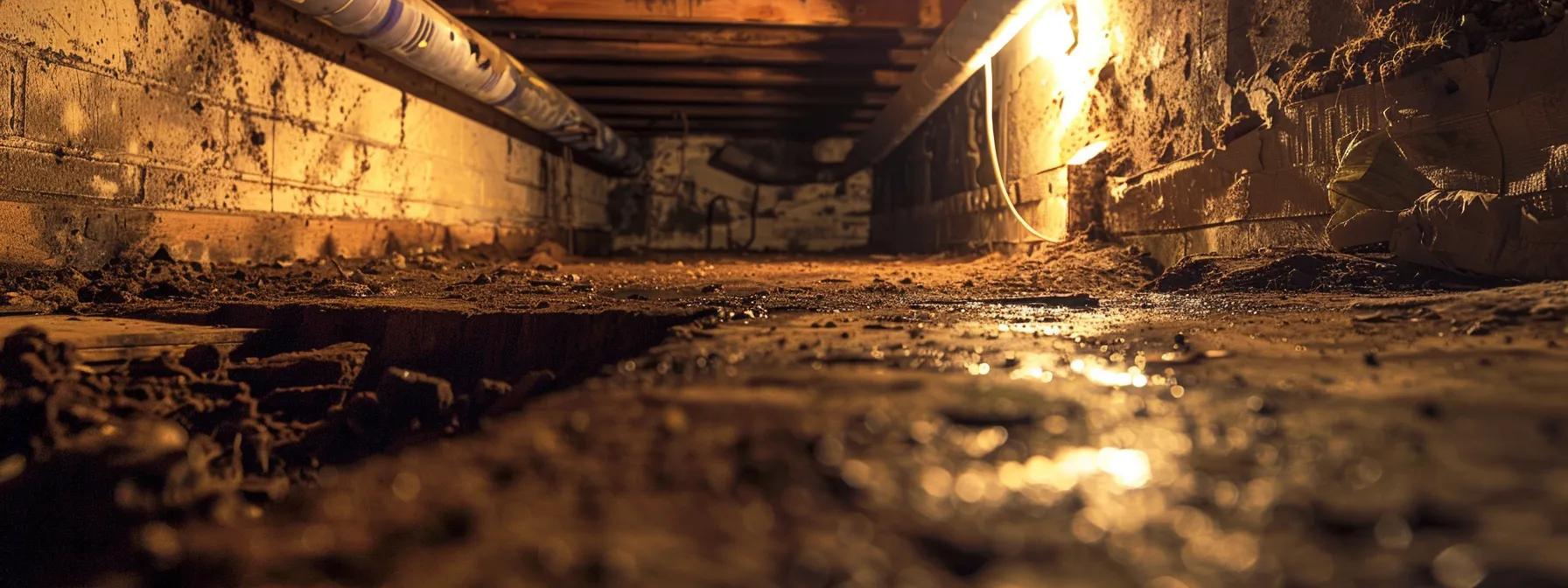
Regarding our homes, basements and crawl spaces can often be the unsung heroes, yet they can also hide some of the most critical signs of foundation issues. At CW Basement Waterproofing, we’ve seen firsthand how these hidden spaces can unveil the true extent of problems like water damage, structural weaknesses, and even pest invasions, all closely linked to foundation distress. By paying attention to the clues these areas provide, we can take proactive steps to craft an effective repair strategy and stop more extensive damage in its tracks.
Being aware of these warning signs early on is essential. It not only helps us address potential concerns before they escalate, but it also empowers us to maintain the longevity of our homes. Whether it’s a damp smell, water stains, or unwanted critters, recognizing these symptoms means we can tackle basement waterproofing Chicago efficiently and effectively. Let’s work together to ensure our homes remain safe and sound, protecting them from issues lurking beneath the surface.
Addressing Water Intrusion or Persistent Dampness
Water intrusion in basements is a scenario we confront frequently. Persistent dampness on walls or floors indicates water seeps through cracks or porous concrete, compromising the foundation’s integrity. This water presence can foster mold growth and lead to chronic moisture problems inside the home. We consistently advise regular inspections and the use of waterproofing measures to address these concerns before they escalate into major structural issues. The presence of damp, musty conditions is a clarion call for professional intervention to install proper drainage and sealing systems.
Identifying Bowing or Leaning Basement Walls in Chicago Structures
Bowing or leaning basement walls are a serious structural concern. When walls deviate from their original vertical alignment, it signifies extreme pressure from saturated soil or foundation settlement. We have seen in numerous cases where such deformation in basement walls requires immediate reinforcement and stabilization. These structural shifts can eventually compromise the safety of the living space and are often the result of prolonged issues such as hydrostatic pressure or soil instability. Immediate repair and reinforcement using wall anchors or carbon fiber strips are typically necessary to restore structural integrity.
Examining Cracks in Basement Floors or Walls
Cracks in basement floors or walls form vivid evidence of foundational distress. We routinely encounter these cracks, whether vertical, diagonal, or horizontal. Their presence hints at differential settlement and potential long-term instability. The severity and pattern of these fissures help us determine the source of the stress on the structure. Cracks that widen over time can allow water, air, and debris to pass through, exacerbating the problem. It is crucial to address these cracks quickly by sealing them and applying additional waterproofing treatments to prevent further damage.
Detecting Musty Odors or Mold Growth
Musty odors and visible mold growth in basements are nearly synonymous with long-term moisture issues affecting the foundation. We recognize that such conditions not only damage materials but also pose significant health risks. Mold proliferation typically follows water intrusion or persistent damp conditions, and it directly signals that the basement is not properly sealed against moisture. Often, the odor may be the first noticeable sign that the space is compromised. Our team underscores the importance of resolving these issues promptly and thoroughly through mold remediation and targeted waterproofing techniques.
Observing Insect or Rodent Infestations Near Foundation Openings
Insect and rodent infestations in basements or crawl spaces can also indicate underlying foundation problems. When gaps or cracks allow pests to enter, it is not only an unsightly and unsanitary situation, but also it signals that the structure may be compromised. Over time, pest activity can worsen the deterioration of your home’s insulation, wiring, and even the wood framing. We have worked to seal openings and initiate treatment programs that prevent further infestations while addressing the root causes of these access points. This integrated approach helps safeguard your home from pest damage and progressive foundation deterioration.
Understanding Causes Behind Common Foundation Problems in the Chicago Area
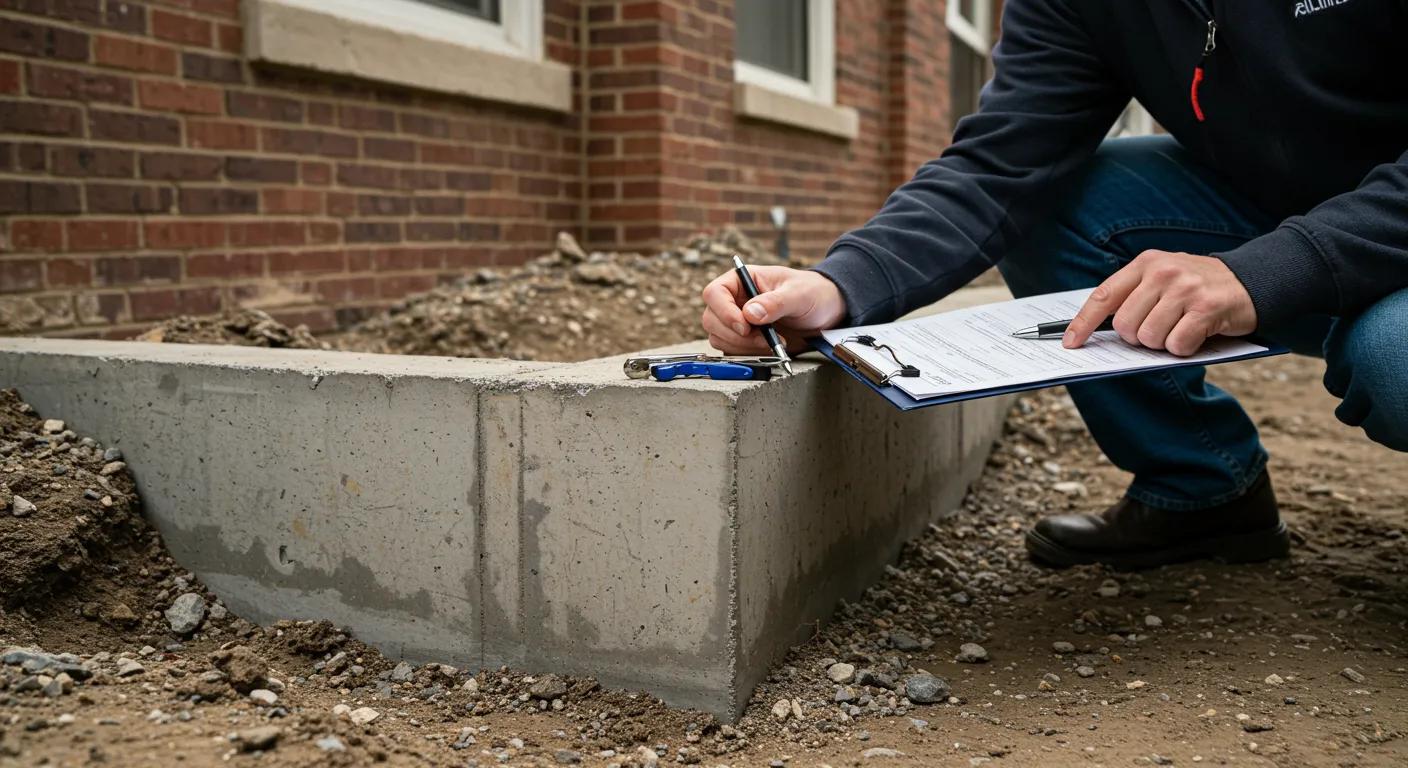
At CW Basement Waterproofing, we recognize that foundation problems in Chicago are rarely random—they stem from a set of predictable, localized factors. Chicago’s unique soil composition and climate play a significant role in causing these issues. Identifying the root causes helps us not only to repair the damage effectively but also to recommend long-term solutions that prevent recurrence. By understanding these factors, homeowners can be proactive in weatherizing and maintaining their properties.
How Chicago’s Clay Soil Impacts Your Foundation’s Stability
Chicago is characterized by its expansive clay soil, which undergoes significant volume fluctuations with moisture changes. We have seen that this cycle of swelling and shrinkage exerts tremendous pressure on property foundations. When the soil swells, it may push against the walls and cause cracks or misalignments; conversely, when the moisture evaporates, the soil contracts, leaving voids that create uneven loads on the structure. This constant cycle of expansion and contraction is one of the primary drivers of foundation settlement and directly impacts your home’s long-term stability.
The Effects of Poor Drainage and Water Management on Foundations
Poor drainage around a home is another critical factor we encounter. When water collects near the foundation due to inadequate grading or blocked gutters, it increases hydrostatic pressure on the structure. Over time, this excess moisture undermines the stabilizing effect of the soil, leading to shifting, cracks, and even water intrusion into basements. We have repeatedly seen that effective drainage systems, such as french drains, proper downspout extensions, and sump pumps, can significantly alleviate the stress placed on the foundation. Proper water management is essential not only for the foundation’s integrity but also for preventing moisture-related issues in basements.
Plumbing Leaks as a Source of Foundation Damage in Chicago Properties
Undetected plumbing leaks are a subtle yet potent cause of foundation problems. Water continuously leaks from pipes or fixtures, it saturates the surrounding soil, undermining its load-bearing capacity. We have assessed numerous properties where hidden leaks have led to localized soil softening, resulting in visible foundation settlement and cracking. This persistent moisture can accelerate the deterioration process of concrete, weakening mortar and causing further structural issues over time. Timely detection and repair of plumbing leaks are crucial in mitigating these risks.
Tree Root Encroachment and Its Consequences for Foundations
Trees are an attractive feature on any property, but their growing roots can lead to serious damage if left unchecked. We’ve seen that invasive root systems can infiltrate foundation walls and underground structures, causing cracks and displacement. Root intrusion not only destabilizes the foundation but also competes with it for moisture, potentially exacerbating the effects of Chicago’s clay soil. Managing tree health and placement is essential for homeowners as an unchecked tree can transform from a landscaping asset into a liability to your home’s structural resilience.
Freeze-Thaw Cycles and Their Toll on Chicago Foundations
Chicago experiences harsh winters with frequent freeze-thaw cycles that inflict repetitive stress on concrete and mortar. Water that enters small cracks in the foundation expands when frozen, gradually widening these gaps over successive cycles. We have observed that this process, over time, can lead to significant deterioration of the foundation, increasing the structure’s vulnerability to further damage and water intrusion. This natural weathering process is unavoidable, but proactive waterproofing measures and regular maintenance can greatly slow its progression and safeguard your foundation.
Differentiating Minor Settling From Significant Foundation Damage Indicators in Chicago
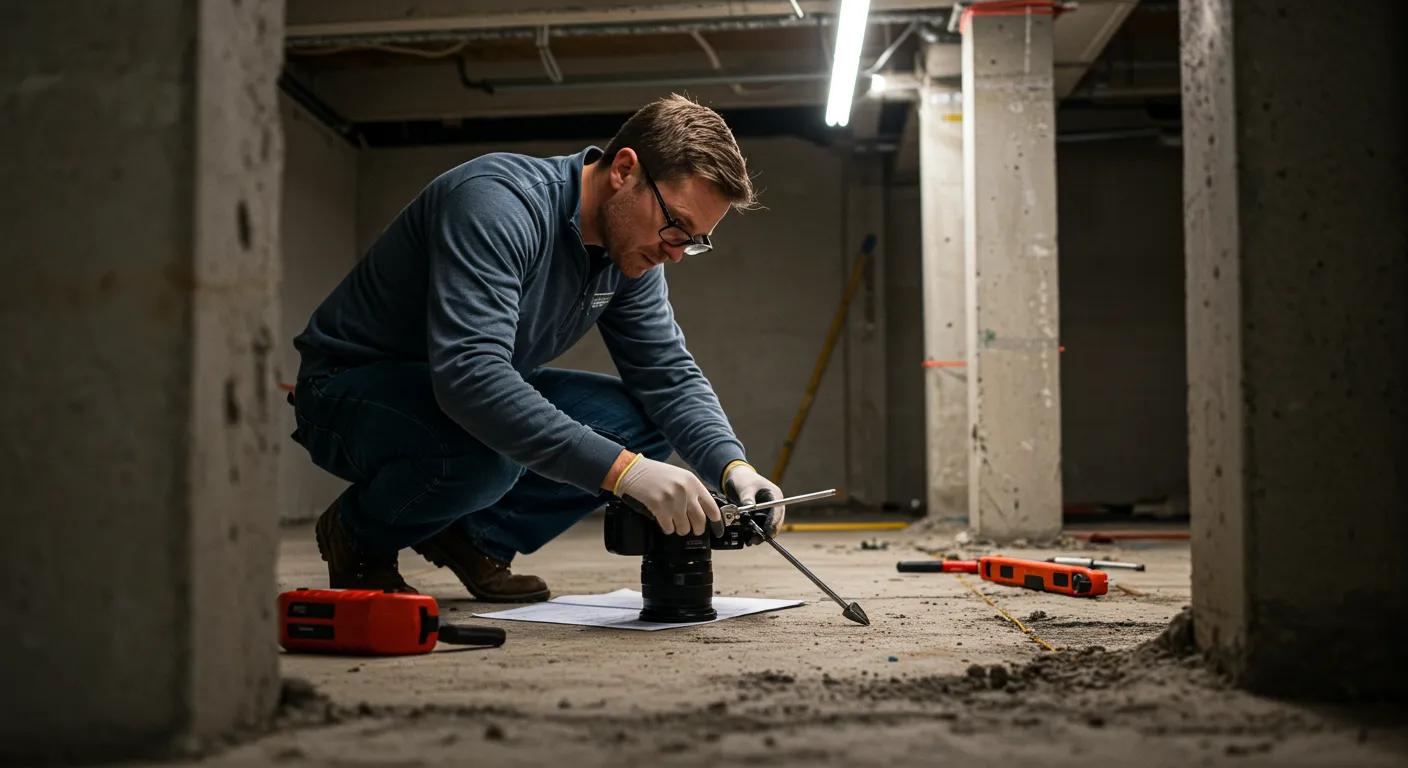
Not every sign of settling in your home is cause for alarm, but distinguishing between normal settling and more severe foundation problems is critical. We take a systematic approach to assess these differences at CW Basement Waterproofing. Through careful observation and measurement, we help homeowners understand which signs require immediate attention. This preventative analysis ensures that minor issues do not escalate into serious, costly repairs.
What Constitutes Normal House Settling in Chicago Properties
Every home experiences a degree of natural settling over time, and slight cracks or gaps can be part of normal aging. We explain to our clients that minor hairline cracks, especially in areas not subjected to high stress, are often considered normal. Normal settling does not usually compromise the structural integrity of the building and is characterized by stable, unchanging patterns that do not worsen significantly over time. We always recommend keeping records of such occurrences to monitor the situation.
When Hairline Cracks Signal Deeper Foundation Concerns
While some settling is expected, the emergence of new or widening hairline cracks can signal the beginning of more significant foundation issues. We pay close attention to whether these cracks are increasing in size and if they appear in multiple areas of the home. In our experience, rapidly expanding cracks can indicate that the foundation is under abnormal stress, possibly due to water intrusion or soil movement. These signs often warrant a professional foundation assessment to determine if remedial action is necessary.
Monitoring Changes in Existing Foundation Flaws Over Time
We advise homeowners to document any existing foundation cracks or issues with dates and photographs. This helps to establish whether the problems are static or progressive. A foundation flaw that shows little to no change over time is often less concerning than one that continues to evolve. Regular monitoring allows us to detect abnormal movement early, addressing complications promptly before causing further structural problems.
Recognizing Progressive Worsening of Foundation Symptoms
A key indicator of severe foundation damage is the progressive worsening of symptoms. We have encountered cases where initial minor issues quickly evolved into significant problems—such as severely uneven floors or extensive wall cracks—due to continuous settlement. Progressive symptoms are a clear sign that the foundation is deteriorating, and immediate intervention is required to prevent catastrophic structural failure. Early recognition of these trends is critical in mitigating long-term damage.
Knowing When to Seek Professional Foundation Assessment in Chicago
Ultimately, it can be challenging for homeowners to decide when to seek professional help. We advise that if you notice persistent or worsening signs—such as significant cracks, misaligned doorframes, or sagging floors—it is time to call an expert. Our experienced team at CW Basement Waterproofing stands ready to conduct comprehensive assessments and recommend tailored, long-lasting repair solutions that suit Chicago’s unique environmental conditions.
Steps to Take After Spotting Signs of Foundation Trouble in Your Chicago Property
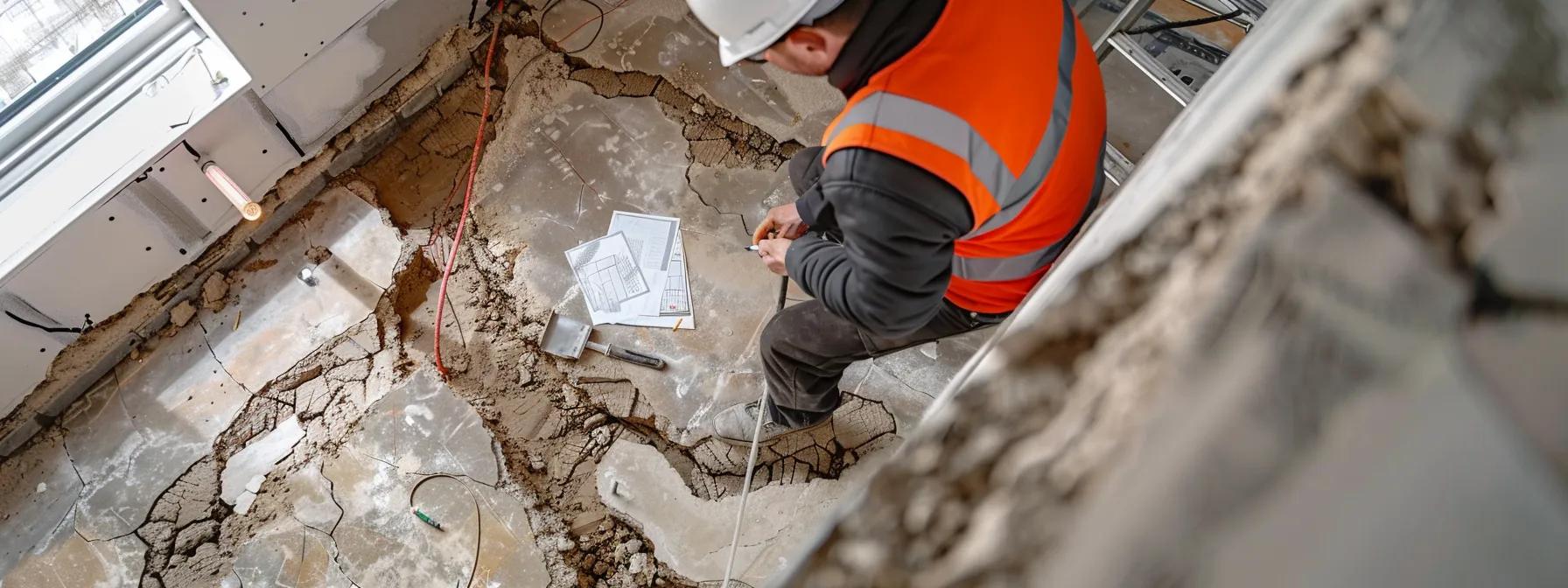
At CW Basement Waterproofing, we believe that quick, decisive action is vital once foundation issues are suspected. After detecting warning signs, a systematic, proactive approach can save you from more extensive damage and costly repairs in the future. We have developed a step-by-step process based on our extensive field experience, ensuring that issues are documented, assessed, and addressed promptly.
Documenting the Observed Foundation Warning Signs With Dates and Photos
Our first recommendation is to document every anomaly you observe. We advise homeowners to take clear photos and record dates when they first notice issues like cracks, gaps, or misalignments. Detailed documentation not only helps track the progression of the problem but also serves as vital evidence during professional evaluations. This record can guide expert assessments and ensure that any repair work is accurately targeted and effectively executed.
Researching Reputable Foundation Repair Specialists in the Chicago Region
Once you have documented the problems, the next step is to research qualified and reputable foundation repair specialists in Chicago. We understand that selecting the right contractor is critical. Look for professionals with proven expertise and a strong track record in handling similar issues in local properties. At CW Basement Waterproofing, our team is committed to transparency, quality workmanship, and customer satisfaction, making us a trusted partner in foundation repair projects.
Preparing Questions for a Professional Foundation Inspection
When speaking with repair specialists, it is essential to be well-prepared with relevant questions. We suggest asking about the diagnostic methods they use, the expected timeline for repairs, and the types of materials and techniques they recommend. Questions about warranties and follow-up services are also important. Being informed not only facilitates better decision-making but also ensures that you understand the repair process and can anticipate any potential additional costs.
Understanding Potential Foundation Repair Solutions for Chicago Homes
Not all foundation issues are identical, and there are several repair solutions available depending on the severity and type of damage. We have used various techniques including piering, slabjacking, carbon fiber reinforcement, and comprehensive waterproofing to address diverse issues. We encourage homeowners to understand these options through consultation with experts who can recommend solutions tailored to your property’s specific circumstances. By evaluating the potential benefits and long-term costs of each method, you can choose a solution that best preserves your home’s structural integrity.
Addressing Foundation Issues Promptly Prevents Further Structural Damage
Time is of the essence when dealing with foundation problems. Addressing these issues promptly can prevent them from progressing into more severe structural damage. We have seen cases where early intervention saved homeowners from expensive and invasive repairs down the road. Our approach emphasizes not only repairing the existing damage but also implementing preventive measures to protect your foundation against future stressors. Thus, taking swift action is key to maintaining a safe, stable, and long-lasting home environment.
Frequently Asked Questions
Q: What are the early signs of foundation damage in Chicago homes? A: Early signs include hairline cracks in brickwork and siding, gaps around windows, and misaligned door frames. Interior clues like uneven floors and sticking doors also point to potential foundation issues. Monitoring these symptoms and documenting changes over time is crucial.
Q: How do Chicago’s clay soils affect foundation stability? A: Chicago’s clay soils expand when wet and contract when dry, exerting uneven pressure on foundations. This cycle can lead to differential settling, cracking, and other structural issues, necessitating proactive waterproofing and drainage solutions to protect your home.
Q: When should I call a professional for a foundation inspection? A: If you notice progressive cracks, misaligned windows or doors, or uneven floors in addition to external signs like leaning chimneys, it’s time to schedule a professional inspection. Early intervention can often prevent more serious and costly repairs.
Q: Can minor settling be normal, and how do I differentiate it from serious problems? A: Some very minor settling is natural over time in most homes. However, if you see expanding cracks, significant misalignments, or noticeable changes in floor levels, these indicate more serious foundation issues that require professional evaluation and intervention.
Q: What repair methods does CW Basement Waterproofing offer for foundation issues? A: We provide a range of services including piering, slabjacking, epoxy crack repair, and comprehensive basement waterproofing. Our approach is tailored to each property’s unique challenges, ensuring long-term stability and protection for your home’s foundation in Chicago.
